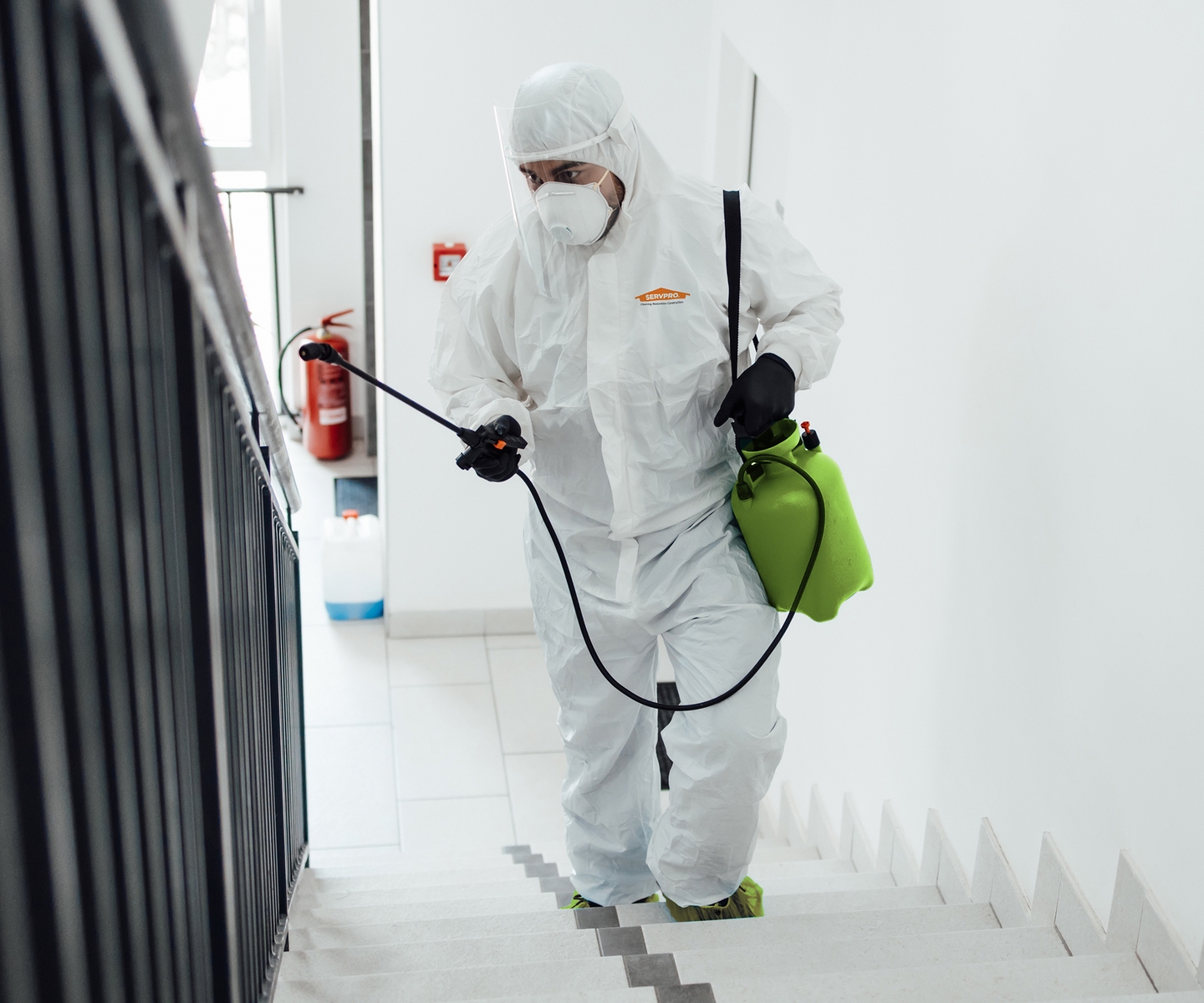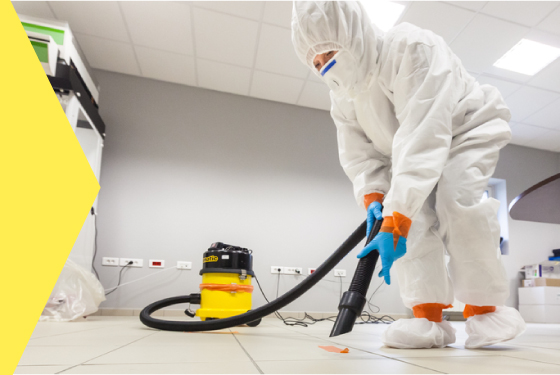Biohazard Removal: Safe Handling and Disposal of Hazardous Products
Biohazard Removal: Safe Handling and Disposal of Hazardous Products
Blog Article
Expert Biohazard Cleaning for Crime Scenes, Trauma Incidents, and Infected Rooms
In the realm of expert biohazard cleaning, thorough attention to detail and adherence to safety protocols are extremely important. As we dive into the ins and outs of biohazard clean-up for these delicate atmospheres, a deeper understanding of the difficulties and essential procedures included will certainly emerge, dropping light on the important role of specialist clean-up services in bring back safety and tranquility of mind.

Relevance of Biohazard Cleanup
Biohazard cleaning following crime scenes and trauma events is crucial for guaranteeing the safety and security of individuals and the setting. When these occurrences occur, they often leave a variety of biohazards such as blood, physical liquids, and other potentially contagious products. These substances can nurture harmful microorganisms like bacteria and viruses, posing serious wellness dangers otherwise appropriately cleaned up and disinfected.
Professional biohazard cleanup services are trained to manage these harmful products securely and effectively. They have the needed tools, such as individual safety gear and specialized cleansing representatives, to completely sanitize the influenced locations. By delegating the clean-up to skilled experts, individuals can avoid exposure to dangerous microorganisms and prevent the spread of infectious conditions.
Additionally, proper biohazard cleanup is vital for safeguarding the environment. Incorrect disposal of biohazardous products can infect soil, water sources, and air, positioning a risk to wild animals and the ecosystem. By complying with rigorous clean-up procedures, professionals can make certain that biohazards are safely removed and thrown away in conformity with laws, minimizing the danger of ecological contamination.
Sorts Of Biohazards Encountered
Numerous hazardous products typically encountered in criminal offense scenes and injury events existing significant wellness risks otherwise handled effectively. Blood and physical liquids are among one of the most common biohazards discovered in these scenarios. These fluids can bring virus such as HIV, hepatitis B and C, and other unsafe microorganisms. Furthermore, tissues, organs, and body parts can also present severe health risks as a result of possible contamination.
An additional kind of biohazard frequently encountered is sharp things like needles, broken glass, and various other items that can create injuries and send infections. Chemical threats are also a concern, as criminal activity scenes may consist of substances like tear gas, pepper spray, or medication production materials that require customized handling and disposal procedures to avoid further harm.
Furthermore, mold and mildew and microorganisms development can take place in spaces where disintegration or prolonged exposure to moisture has actually happened. These microorganisms can launch toxins and irritants right into the air, posing breathing risks to those exposed. Overall, biohazard cleaning specialists need to be trained and well-equipped to properly take care of these various kinds of harmful products to guarantee the safety and security of themselves and others.
Devices and Safety Gear
When addressing the essential task of handling biohazards run into in crime scenes and trauma cases, official statement the use of proper devices and protective gear is critical to making sure the safety of people included in the cleaning procedure. Specialized cleansing devices like biohazard bags, disinfectants, and sharps containers are necessary for the safe collection and disposal of infected products. Making certain that all equipment is effectively maintained, on a regular basis examined, and used according to security standards is vital in reducing the threat of exposure to biohazards throughout cleanup operations.
Cleaning Process and Methods
Reliable and complete clean-up of biohazardous materials from crime scenes and trauma cases needs thorough interest to information and adherence to rigorous safety methods. The cleaning procedure normally involves several essential steps. Originally, the area has to be assessed to establish the degree of contamination and the suitable cleansing methods required. Next, all biohazardous products, consisting of blood, physical fluids, and tissue deposits, need to be thoroughly gotten rid of and gotten rid of according to regional laws.
Adhering to the elimination of biohazardous materials, the damaged location undergoes an extensive cleansing and disinfection process. This step involves making use of specialized cleansing agents and devices to ensure that all traces of contamination are eliminated. After cleaning, the area undergoes extensive testing to verify that it is safe and complimentary of any continuing to be biohazards.

Decontamination and Disposal Treatments
To make certain thorough decontamination and proper disposal of biohazardous materials, following the careful cleaning procedure, particular procedures have to be thoroughly followed with strict adherence to safety methods. Decontamination involves the elimination or neutralization of pollutants to lessen the danger of exposure and spread of unsafe substances. This procedure typically includes cleansing, disinfecting, and sanitizing the damaged area making use of specialized tools and EPA-approved chemicals.
As soon as decontamination is completed, appropriate disposal of biohazardous products is essential to stop more contamination or damage. Biohazardous waste, such as blood-soaked products or bodily liquids, have to be carefully collected, packaged, and identified according to governing guidelines. ATP testing. These products are after that carried to qualified facilities for disposal via suitable networks, guaranteeing compliance with regional, state, and federal policies
Final Thought
Finally, specialist biohazard cleanup is crucial for ensuring the effective and safe elimination of harmful materials from criminal activity scenes, injury cases, and infected spaces. By using specific devices, safety equipment, and following correct clean-up processes and strategies, biohazard cleaning groups can effectively dispose and decontaminate of biohazards, lessening the risk of exposure and harm to people and the environment.
As we dive right into the ins and outs of biohazard clean-up for these sensitive environments, a much deeper understanding of the difficulties and crucial procedures entailed will certainly arise, shedding light on the indispensable duty of specialist cleaning services in restoring safety and peace of mind.
Specialist biohazard cleaning solutions are educated to deal with these unsafe materials safely and successfully. By following rigorous cleanup procedures, professionals can make sure that biohazards are safely removed and disposed of in conformity with policies, decreasing the danger of ecological contamination.
In general, biohazard clean-up professionals should be skilled and well-appointed to effectively manage these different types of harmful materials to make sure the check my site safety and security of themselves and others.
When resolving the critical task of dealing with biohazards encountered in crime scenes and trauma events, the application of proper equipment and safety equipment is extremely important to making sure the safety and security of people included in the clean-up procedure.
Report this page